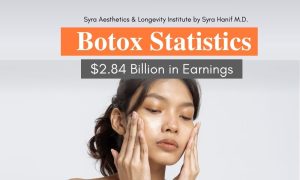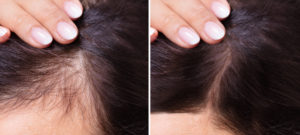Table of Contents
Instantly recognizable in a single glance, Gummy smiles can be explained as a quite visible and slim band of upper gums that become apparent when a person smiles. While there are some people who might not be bothered by these apparent gums; however, the popular perception about gummy smiles is that it isn’t appreciated in terms of how it looks, so much so that it even makes people self-conscious.
But what exactly causes a gummy smile? And how do you fix a gummy smile, including the option of a lip flip?
In this blog, we’ll cover everything that you need to know about a gummy smile – Read on!
What is a Gummy Smile?
Gummy smile, which is also referred to as Excessive Gingival Display is when a substantial portion of gum tissues are clearly visible during a smile, right above the set of upper teeth. The presence of a gummy smile can easily be determined visually, as explained above – However, its occurrence is clinically determined when there is 4 or more than 4 millimeters of gum tissues being exposed with a smile.
For anyone who believes to have a gummy smile is highly recommended to visit their aesthetician or dentist, allowing the experts to conduct x-rays and a few other required tests that will enable them to determine the cause of your gummy smile, which consequently will help them decide the type of treatment required to treat gummy smiles, including options like Botox lip flip.
What Causes a Gummy Smile?
- Teeth may be too small
- Gums can outgrow over the teeth – due to breathing through the mouth, certain medications or even poor dental hygiene
- The most common cause of a gummy smile is that the upper jaw is longer than it should be, in relation to the size of the face and lip tissue available to cover the gums
Gummy Smile Treatment
Gummy smile is a very harmless condition and does not in any way indicate any underlying health problem – However, the majority of the people who have gummy smiles tend to be very conscious of their appearance and how their smile looks.
Fortunately for all these self-conscious people, there is a list of several distinct treatment options that are very effective and are easily available to treat your gummy smile by balancing the ratio between the gum tissues and teeth.
While which option is the best one for you is determined by the experts, based on the cause of your gummy smile; here’s a list of treatment options that can be effective when working against gummy smiles:
- Botox
- Orthognathic surgery
- Lip repositioning
- Crown lengthening
- Gingivectomy
BOTOX For Gummy Smile
One of the most effective ways to treat gummy smiles, and the most successful one too is Botox. Highly recommended by expert aestheticians at Syra Aesthetics, Botox for gummy smiles is a non-invasive treatment that offers instant results. Botox consists of the type A botulinum toxin, which once injected has the capability to relax the muscles of the upper lip, along with limiting the upward elevation of the upper lip during a smile, which leads to keeping the gums completely covered.
Once the process of botox for a gummy smile is successfully completed, the treated upper lip which is relaxed using Botox does not contract back again, and nor does it elevate in any way during a smile; this result is what makes this treatment so effective.
These Botox for gummy smile results last for a minimum of 3 months. Since this treatment for a gummy smile is so popular and frequently used that multiple patients over the years have proven that this process is conducted with repetition leading to more and more time between the two required treatments.
Benefits of Treating a Gummy Smile with Botox
Syra Aesthetics recommends its patients opt for botox for a gummy smile, as it is without a doubt the most effective and least-invasive treatment.
Listed below are the benefits of opting for botox for a gummy smile to treat this no-so-appealing condition:
- No side effects or discomfort
- No downtime post procedure
- Instant recovery
- Botox is economical compared to other gummy smile treatments
- Natural looking and instant results
—————————————————-
– Disclaimer –
This blog is for informational & educational purposes only and does not intend to substitute any professional medical advice or consultation.
For any symptoms or medical advice, please consult with your physician, Or Book an appointment with our board-certified aestheticians at Syra Aesthetics.
Also read:
1. How to fix a Gummy Smile

-
About The Author
Dr. Syra Hanif M.D.Board Certified Primary Care Physician
Dr. Hanif is the Director of Aesthetic Medicine. She is a board-certified physician in Aesthetic Medicine who specializes in using non-surgical alternatives in order to enhance one's appearance through Botox and fillers.
Read More










